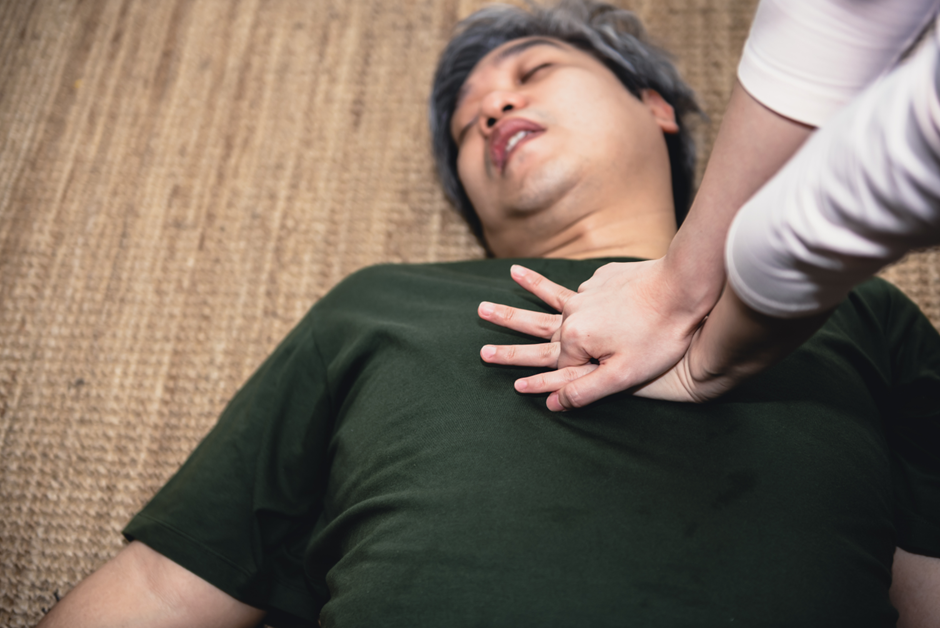Myth: Cardiac arrest is the same as a heart attack.
Fact: Cardiac arrest is an electrical problem where the heart stops beating suddenly, whereas a heart attack is caused by blocked blood flow to the heart muscle.
Myth: Cardiac arrest always has warning signs.
Fact: Cardiac arrest can occur suddenly and without prior symptoms, making it extremely unpredictable.
Myth: You shouldn’t use an AED on someone with a pacemaker.
Fact: It is safe to use an AED on someone with a pacemaker or implanted defibrillator; place the pads at least one inch away from the device if possible.
Myth: Only elderly people can have cardiac arrest.
Fact: Cardiac arrest can occur at any age, including in children and young adults, especially those with inherited heart conditions.
Myth: Using an AED can cause more harm than good.
Fact: Automated External Defibrillators (AEDs) are designed to be used by anyone, with clear instructions, and can significantly increase survival rates if used promptly.
Myth: Heart disease is the only cause of cardiac arrest.
Fact: While heart disease is a common cause, cardiac arrest can also result from electrolyte imbalances, respiratory arrest, drowning, choking, or trauma.
Myth: If you’re physically fit, you’re not at risk for cardiac arrest.
Fact: Even individuals who are physically fit can experience cardiac arrest due to underlying heart conditions or genetic factors.
Myth: Women don’t have to worry about cardiac arrest as much as men.
Fact: Cardiac arrest affects both men and women, and the risk increases with age for everyone.
Myth: CPR alone is enough to revive someone from cardiac arrest.
Fact: CPR is crucial for maintaining blood flow to the brain and heart after cardiac arrest, but defibrillation is often necessary to restart the heart.
Myth: Cardiac arrest is always fatal.
Fact: With immediate treatment, including CPR and defibrillation, some people survive cardiac arrest.
Myth: You can’t do anything to prevent cardiac arrest.
Fact: Managing risk factors such as heart disease, maintaining a healthy lifestyle, and monitoring heart conditions can help reduce the risk of cardiac arrest.
Myth: Only medical professionals can perform CPR.
Fact: Anyone can learn and perform CPR; bystander CPR is encouraged and can be lifesaving.
Myth: Cardiac arrest victims are better off in a hospital than receiving bystander CPR.
Fact: Immediate CPR can double or triple a cardiac arrest victim’s chance of survival until professional help arrives.
Myth: Cardiac arrest victims feel pain.
Fact: During cardiac arrest, the individual is unconscious and does not feel pain.
Myth: It’s illegal to help someone with CPR if you’re not certified.
Fact: Good Samaritan laws in many places protect bystanders who assist in emergencies.
Myth: All cardiac arrest survivors suffer from long-term cognitive problems.
Fact: While some survivors experience cognitive issues, outcomes vary, and many recover with appropriate medical and rehabilitative care.
Myth: You can shock someone with an AED even if they have a pulse.
Fact: An AED will only advise a shock if it detects a shockable rhythm; it will not allow a shock if a pulse is present.
Myth: Young people don’t need to worry about cardiac arrest.
Fact: Cardiac arrest can affect young people, especially athletes with undetected heart conditions or those who experience a sudden impact to the chest.
Myth: Drinking alcohol in moderation can prevent cardiac arrest.
Fact: While moderate alcohol consumption may have some heart benefits, excessive alcohol use is a risk factor for cardiac arrest.
Myth: You can’t improve your survival chances if you’re at risk for cardiac arrest.
Fact: Regular check-ups, managing cardiovascular risk factors, and adopting a healthy lifestyle can significantly improve your survival chances.

